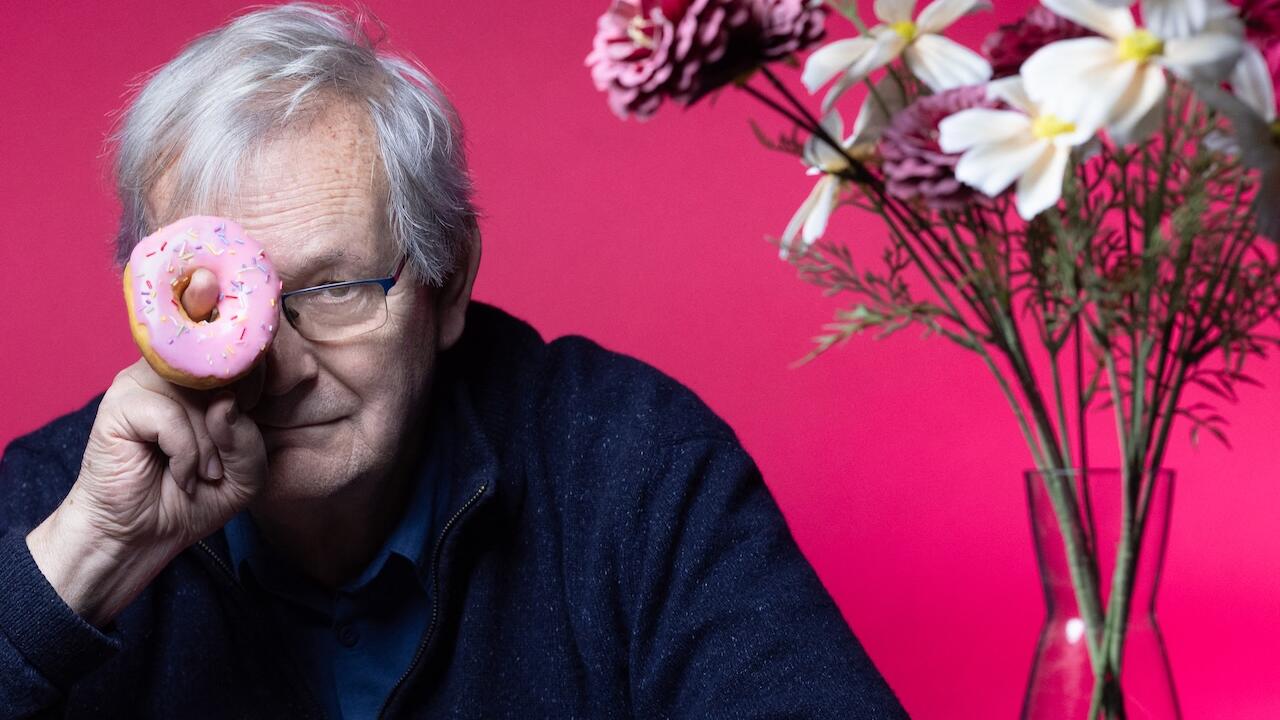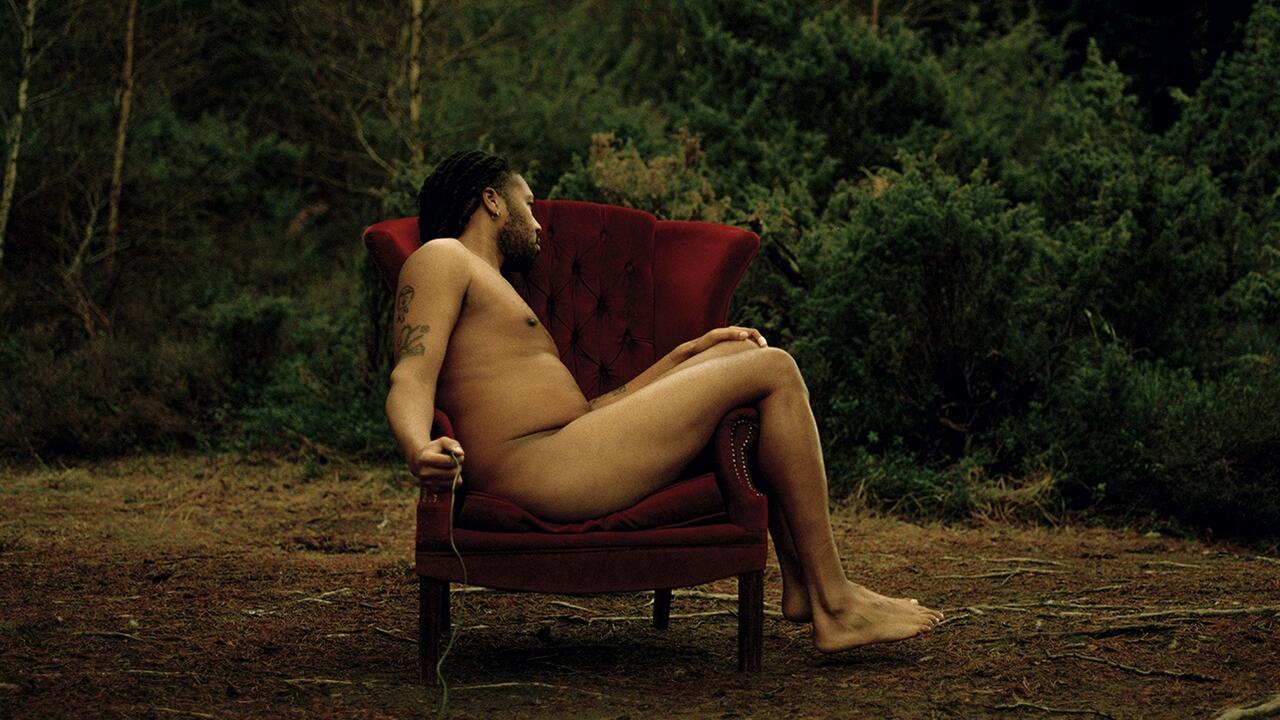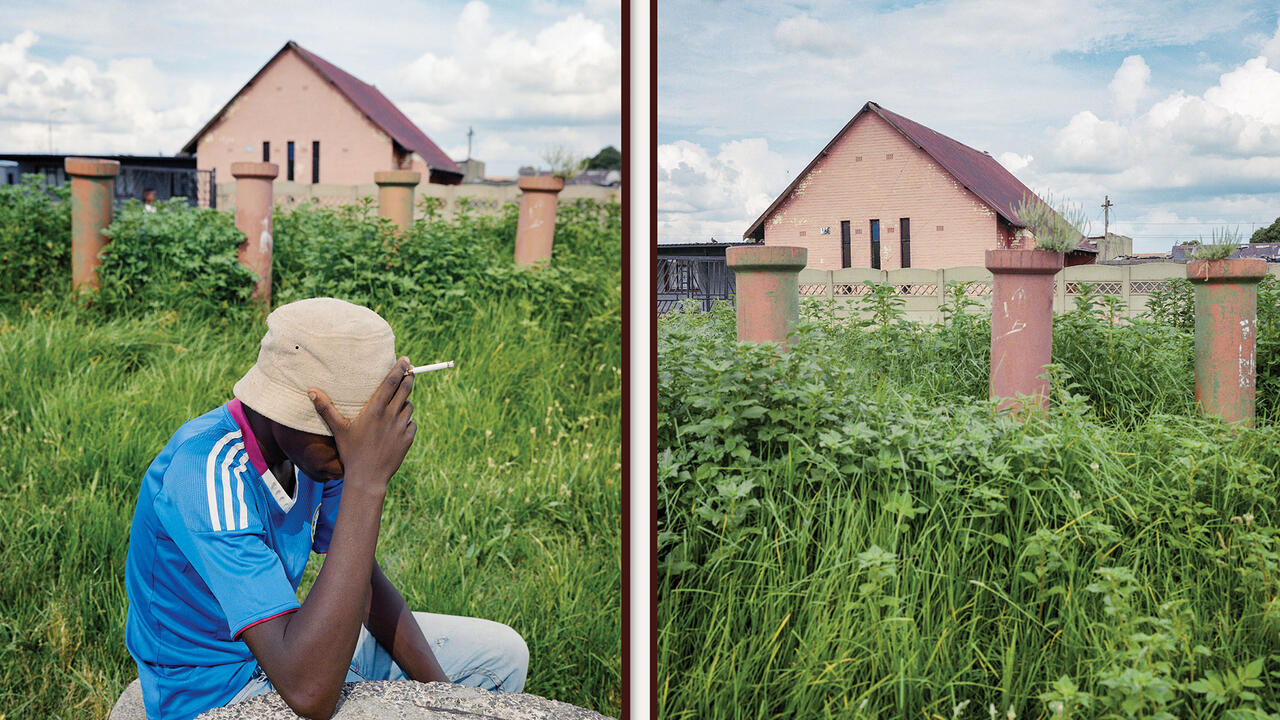All Other Images
The legacy of the late Italian photographer Luigi Ghirri
The legacy of the late Italian photographer Luigi Ghirri

When the Italian photographer Luigi Ghirri died unexpectedly at his home in Reggio Emilia in 1992, he had been working on two projects: a series of still lifes, and a series depicting the decaying houses of the Po Valley in the northern Italian province where he had lived most of his life. The last exposed frame on Ghirri’s roll of film – showing a tributary of the Po River receding into a distant misty horizon – summarizes his lifelong attempt, in his own words, ‘to be able to finally distinguish the precise identity of man, things, life from the image of man, things and life’.1
Ghirri’s photographs are often likened to memories or poems, but for me they are most like photographs. His images heavily bear the marks of the medium’s capabilities and shortcomings: its rendering of three-dimensional or ‘real’ information onto a single flat surface; its deletion of the space around its frame; its reduction of a vast landscape to the size of a postcard. And especially now, in their faded and ageing present state, Ghirri’s prints from the 1970s and ’80s signal themselves as relics of the first wave of the then-new colour photography, carrying with them both prescience and nostalgia. Their dry humour and deadpan, often ironic, compositions and style remind us of better-known practitioners of the period, but they also speak in a photographic language – one that seeks to highlight the medium’s specific qualities – that feels just as relevant today.

Though he exhibited extensively in Italy and abroad while he was still alive, achieving recognition as an artist, writer, teacher and curator, Ghirri’s legacy has been somewhat scattered since his death, and his work has remained largely unknown outside of Italy. The past few years have seen a resurgence of interest in his practice, thanks to a significant exhibition and subsequent catalogue published by Aperture in New York (2008–9) and solo exhibitions this year at galleries in Berlin, London, Brescia and Zurich. A selection of his prints were brought together in a 2010–11 group show curated by Thomas Demand at the Nouveau musée national de Monaco and Matthew Marks Gallery in New York; some of his photographs are included in ‘ILLUMInations’ at the 54th Venice Biennale; and an exhibition curated by Elena Re will be held at the Castello di Rivoli in Turin next year. But the relatively small collection of prints gathered in these exhibitions belies Ghirri’s prolific output. Of the dozens of publications of his photographs and writings (many of them issued by the small art press he ran with his wife, Paola Ghirri, between 1977 and 1980), nearly all of them are now out of print, and only one has been translated into English. Since his death, there has not been a comprehensive retrospective of his work in any major institution.
And it may prove challenging to do so. Throughout his life, Ghirri conceived of his work in series, primarily for publications rather than for exhibitions. When he did print his works for display, he did so in a modestscale, usually no larger than a postcard. Some series he carried on for decades, constantly reshuffling and reorganizing them for books and exhibitions. His photographic pursuit was both a monumental task and a modest attempt: sustained series such as ‘Italia ailati’ (Italy on the Margins, 1971–79) and ‘Paesaggio italiano’ (Italian Landscape, 1980–92) reflect an almost anthropological urge to research and survey his surroundings. But even within them, there is always a tendency toward a more subjective, spontaneous type of recording, captured in the single, often witty images that offer themselves up like ironic observations or quizzical statements: an orphaned potted cactus, two postcards sitting in a rack, a window closed off by a broken shutter, or a crumpled piece of gift-wrap depicting a starry night.

In the introduction he wrote for his catalogue Kodachrome in 1978, Ghirri framed the dilemma he returned to again and again: namely, that the world had already been completely and thoroughly mapped and represented. Ghirri described the profound impression left on him by seeing the photograph of Earth taken from the Apollo spacecraft in 1969: ‘It was not only the image of the entire world, but the image that contained all other images of the world.’2 This sense that the whole visible world – quite literally, the surface of the Earth and all the things within it – had already been rendered and described, consumed Ghirri for the rest of his life, but it did not limit him. Within that image of the Earth seen from space ‘the space between the infinitely small and the infinitely large was filled by the infinitely complex: man and his life, nature’.3 And it was that infinitely complex part of the world that Ghirri set out to document.
In the early years of his career, Ghirri moved to Modena, a small city between Bologna and Parma, where his photography was informed by both his day job as a surveyor and by the circle of conceptual artists he met there. His 1973 series ‘Atlante’ (Atlas) characterizes the more rigorously conceptual aspects of his early practice and suggests he was working through the condition that ‘the only possible journey now seems to be within the sphere of signs and images’.4 In ‘Atlante’, Ghirri photographed close-ups of the pages of his own atlas at home. The names and symbols inscribed on the maps – the word ‘Desert’ typed in block capitals over a speckled field of pointillist brownish dots, or the smattering of tiny pine trees used to symbolize a forest – show us how far removed these cartographic representations fall from the landscapes they represent.

In the other bodies of work he began in the 1970s, including ‘Paesaggi di cartone’ (Cardboard Landscapes, 1971–74) and ‘Still-Life’ (1978–81), Ghirri combined his conceptual concerns with a more observational, almost anthropological, approach to surveying his immediate surroundings. Though he was developing his practice far from the New Topographics in the US, his impulse to survey the land emerged in tandem with the burgeoning movement. Indeed, his writings and works from the period reveal the impact of being exposed to a historical show of the American Works Progress Administration photographers in 1975, and to work by Walker Evans, Lee Friedlander and William Eggleston. In a similar spirit, Ghirri’s images saw the ordinary surfaces of the contemporary vernacular – street corners, petrol stations, billboards, posters, shop windows – as worthy of artistic scrutiny. But Ghirri’s approach, which he termed ‘sentimental geography’ or ‘indefinite cartography’,5 was less matter-of-fact than it was punctuated and infused with irony, wit and the use of visual puns. His images represent the chance meeting of the past with the present, as if he intended to preserve the precise look of a Total petrol station in Carpi (1973) or a gelateria in Parma (Parma, 1984) for posterity.
In surveying his surroundings, Ghirri concentrated almost exclusively on the local, making the majority of his work in the Po Valley. ‘I love minimal Sunday journeys,’ he wrote, ‘no further than three kilometres from my house.’6 What he encountered in that radius had little in common with the more clichéd or majestic landscapes of Italy. Rather than stunning coastlines or mountain views, the main features of Reggio Emilia are its flat, two-lane roads running through nondescript, industrial towns and fields dotted with decaying silos and barns. Ghirri saw in the area a kind of melancholy: ‘Melancholy is the road sign for an effaced geography, it is the feeling of distance that separates us from a potential simple world [...] Because the horizon nearly always mingles earth and sky, because the countryside also inhabits city and villages, because streets seem always to head toward the same point – and thus to nowhere.’7 Ghirri identified the slightly confined feeling of driving through this landscape, where the horizon line seems to stretch endlessly in front of you, with few details to punctuate it. In the many photographs he took of those roads, the landscape does not open up so much as appear strangely hemmed in, even miniaturized, confined to the small frame of the picture. A recurring motif is the crumbling or weathered roadside gateways to country farms, signalling the entrance to an estate that appears minute in the distance, if it appears at all.

Ghirri didn’t only represent the landscape itself, but also the landscape as it had already been represented, having passed through, as he called it, ‘all representations and cultural models that are known and given to us asdefinite and decisive’.8 We see it, through his lens, on billboards, in postcards, painted in murals or pictured in advertisements. Knowing that signs and images of nature could not be extracted from nature itself, Ghirri often pictured the real landscape and its simulation flattened into a single, surreal photographic amalgam. Nowhere is this attraction more apparent than in his series ‘In scala’ (In Scale, 1977–78), taken in the Italian coastal town of Rimini. Though the city boasts a popular beach, Ghirri turned his camera inland, to the local theme park, Italia in Miniatura, which featured 1:25 and 1:50 scale models of Italian landmarks, from Michelangelo’s house in Rome to St. Mark’s Square in Venice. Ghirri found as many views to photograph here as a tourist would at the landmarks themselves. He photographed the model-Mont Blanc, built of plaster and painted white to simulate a snow-capped summit, from several different angles – against the sky, so it appeared almost real, and then again with tourists walking its concrete paths and gripping its metal guardrails, towering over it. This miniaturized, thoroughly manufactured landscape was yet another typical ‘Italian landscape’, which Ghirri treated as no more or less ‘real’ than if he were photographing Mont Blanc or St. Mark’s itself. This series complicates the reading of his other works, because after seeing them it’s hard not to read his full-scale landscapes – such as the panoramic view of medieval buildings of Irsina (Matera) (1987) – as miniatures or simulacra.
Ghirri concerned himself not with extracting the purity from these Italian vistas but with picturing them as he saw them, intersecting and colliding with everyday representations, symbols and images. For him, even the cheapest and most ubiquitous imagery of the world could be re-presented in photographs. He deepened and complicated this interest by working as a commercial photographer throughout his career. In the 1980s he completed commissions for the tourism board of Naples, photographed Versailles for the French Ministry of Culture, and documented stage productions for the municipal theatre of Reggio Emilia. He was also hired to photograph campaigns for Ferrari, Bulgari and a ceramic tile company. Likewise, his artistic compositions often consciously co-opt the language of advertising and marketing by isolating a single subject or placing it at the dead centre of the frame. They also have something of the ‘de-skilling’ employed by conceptual photographers: at times he bisected the frame completely with a tree trunk or a column, and he often used blatantly symmetrical compositions, like identical trees framing a closed doorway, paired street lamps or umbrellas on the beach.

Ghirri’s images of Italy’s most beloved historical sites, museums and tourist destinations reveal the inevitable slippage or sense of melancholy that arises in the gap between our imaginings of a place and the look of it once we get there. He shot the deserted alleys and canals of Venice in the early morning, so they seem as ordinary as any urban streets, and the anonymous corners and pavements of Rome by night, devoid of any landmarks. In the faded palazzo in Emilio Romagna (1985) we don’t see nostalgic traces of frescoes or crumbling ornamentation – instead, its rooms are simply empty and the walls blank. Any landscape was already a representation: ‘This “New World” has become a simulacrum of itself,’ Ghirri wrote in a 1983 essay about the work of William Eggleston, ‘and appearances increasingly become opaque windows of unexpected solidity and depth.’9 Perhaps that’s why he rarely photographed people – because the gap between an image of someone and the person himself was too large. As Ghirri put it: ‘Any photographed human being is always a photograph.’10 Instead, human figures in his photographs almost always function to disrupt or confuse the scale of the landscape behind or in front of them. Often they turn out to be cardboard cutouts, as in the man in his underwear behind a shop window in Rotterdam (1973), or, if they are real, we only see the backs of their heads, like the four figures in Salisburgo (Salzburg, 1977), who are shown studying a map of the Austrian Alps as if they were gazing at the view itself. Ghirri himself is rarely present in any image, apart from his appearance in a reflection in a shop window (Paris, 1976), and another time as a shadow on an empty dirt road (Castellina in Chianti, 1988).
As much as his writings implied that the world had been exhausted by representations of it, Ghirri’s deep and far-reaching body of work suggests the opposite: the overwhelming sense when looking at his images is that he always saw the possibilities for photographing the world, in all its remarkable and unremarkable aspects. Even the most generic view or clichéd reproduction was worthy of a second glance or a sustained look. When he wrote in 1973 that ‘the only possible journey now seems to be within the sphere of signs and images’, he did not see this as something to lament, but rather as the opportunity for endless possibilities of re-presenting that journey. Lookingat his archive of images, what makes many of them so resonant, even moving,is that they never aimed to capture the sublime. Instead, whether they show us a view of the sea seen from the island of Capri or a bucolic park inRavenna, they hint at the possibility of something sublime, while at the same time reflecting the doubt that a photograph could ever truly describe it. In his iconic image Alpe di Suisi (1979), an elderly couple, hand-in-hand, walks through what would seem to be an idyllic Alpine meadow on a perfectly clear day, but something is disorientating: the muted colours of the blue sky and the distance of the grey mountains make it look like the couple is walking toward a painted backdrop. As with so many of Ghirri’s views, the image never shows us the sublime itself, but rather suggest its existence, just out of view, at the end of a road or over the horizon, somewhere beyond the picture’s frame.
1 Luigi Ghirri, ‘Selected Writings’, It’s beautiful here, isn’t it… Photographs by Luigi Ghirri, ed. Paola Ghirri, Aperture Foundation, New York, 2008, p. 112
2 Ibid, p. 111
3 Ibid, p. 111
4 Luigi Ghirri, Atlante (Atlas), Charta, Milan, 1999
5 Luigi Ghirri, Paesaggio italiano / Italian Landscape, Electa, Milan, 1989
6 Luigi Ghirri, Niente di antico sotto il sole – scritti e immagini per un’autobiografia (There’s Nothing Old Under the Sun – Writings and Images for an Autobiography), eds. Paolo Costantino and Giovanni Chiaramonte, SEI, Turin, 1997, p. 17
7 Luigi Ghirri, ‘Un cancello sul fiume’ (A Gate over the River), published in the exhibition catalogue for the Milan Triennale, eds. Vittoro Magnano Lampugnani and Vittoria Savi, Electa, Milan, 1988, pp. 87–94
8 Ghirri, It’s beautiful here, isn’t it…, Op Cit., p. 111
9 Ibid, p. 116
10 Ghirri, Niente di antico sotto il sole – scritti e immagini per un’autobiografia, Op Cit., p. 62
Luigi Ghirri (1943–92) lived most of his life in Reggio Emilia, Italy. His photographs are included in ‘ILLUMInations’ at the 54th Venice Biennale until 27 November. This year, there have been solo exhibitions of his work at: Mummery + Schnelle, London, UK (toured from Galleria Massimo Minini, Brescia, Italy); and Mai 36 Galerie, Zurich, Switzerland (toured from RECEPTION, Berlin, Germany). Ghirri was included in the group show ‘La Carte d’après Nature’, curated by Thomas Demand, at Matthew Marks Gallery, New York, USA (toured from the Nouveau musée national de Monaco, 2010). The exhibition ‘Luigi Ghirri – Project Prints’, curated by Elena Re, will open at the Castello di Rivoli in Turin, Italy, on 3 February 2012.






















